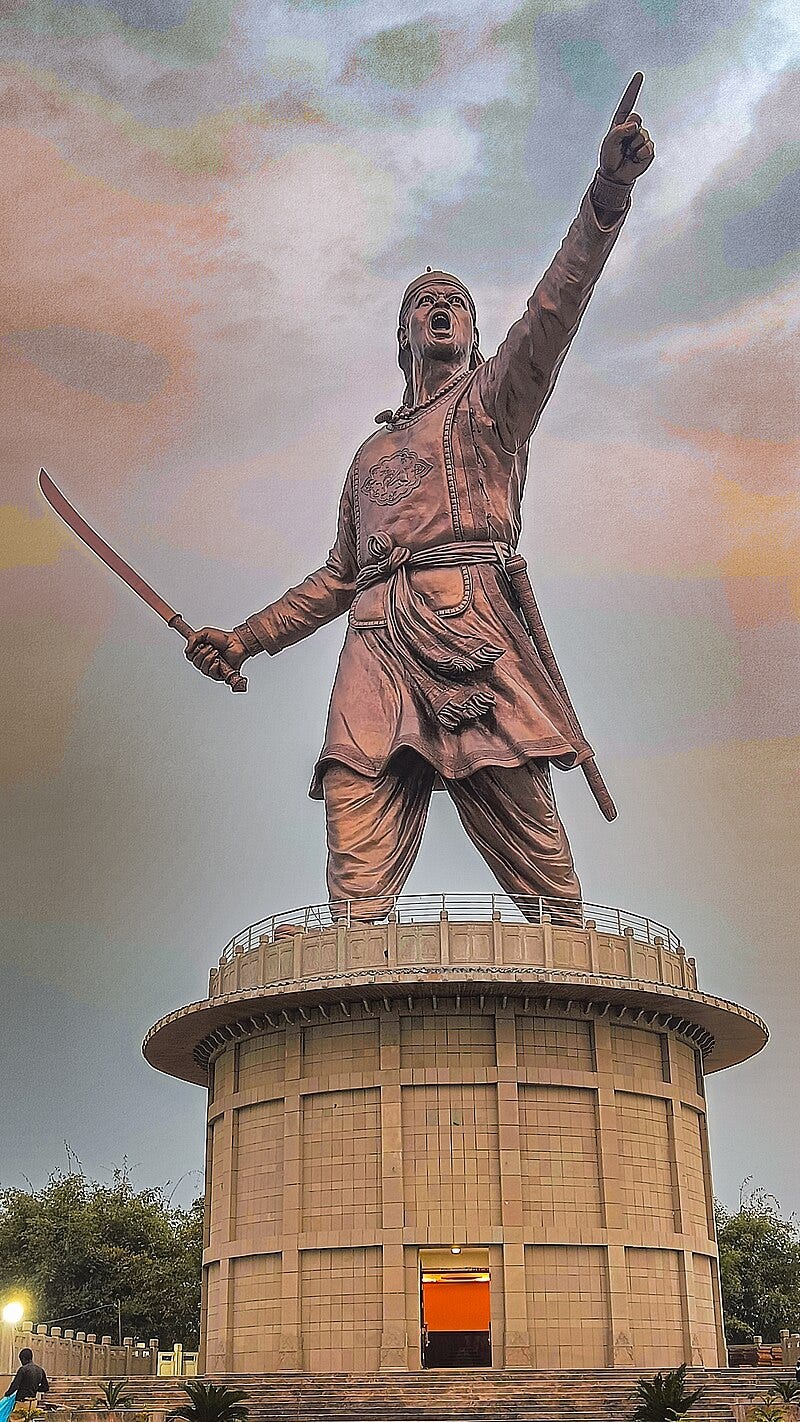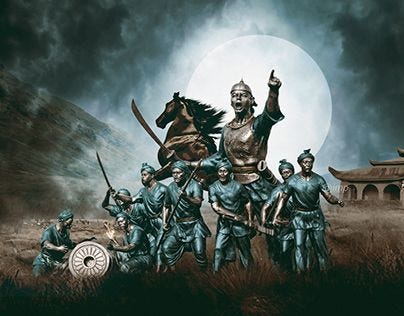Turning the odds in one's favor
A history lesson on Lachit Borphukan teaches a life lesson to kids
"We just cannot remember the dates and the details in history, it is so boring!" - exclaimed Ishaan.
Ishaan, along with 20 students had been handpicked by the school principal for separate coaching sessions.
This group of bright boys and girls were to represent the school in a prestigious quiz competition. Tanvi Sharma - the school principal had roped in couple of new professors to hone the knowledge and skills of this group. She was ambitious and was gunning for the school to make a mark in the competition.
Today, they were in history coaching and like most kids, they did not really enjoy it.
Tanvi looked worryingly at Sanika Kamat- the new history professor. Sanika had been teaching for 30 minutes but the batch was not really getting along.
Realizing that she needed something different, she changed tack.
She pulled up a picture on the screen and shared it with the class.
"Take a look at this picture - Here is my nephew Roshan celebrating winning 'Lachit Borphukan gold medal' during his NDA days. The prestigious honor is reserved for the best passing out cadet. It is a recognition of the all-round skills and character of the cadet"
"But who is Lachit and why I am telling you this now?" The class shrugged but looked at Sanika keenly to know more.
Sanika smiled and asked - "Guess who he could be?"

"Paramveer chakra winner?" "Martyr in Kargil war?" - kids threw darts in air trying to guess.
"Well! He is an example of how we can turn an adverse situation into our favor through the brilliant use of tactics and people leadership"
Let us look at the Ahom kingdom to which Lachit belonged.
The formidable kingdom was situated in the Brahmaputra Valley in Assam and had successfully repulsed the Mughal Expansion in Northeast India. It maintained its sovereignty for nearly 600 years (1228-1826).
The Mughals and other invaders were attracted by the rich natural resources that lay within the areas under the Ahoms.
Within a span of 60 or so years, 1615 to 1682, 18 major conflicts had sparked between the Ahoms and Mughals. It was in this time that Lachit was born and became one of the symbols of resistance to the Mughal rule. When one writes of the history of resistance to the Mughals, Lachit Borphukan’s name would be there right up with Shivaji and Rana Pratap.
His father - Momai Tamuli Borbarua was the commander-in-chief of the Ahom army.
Momai rose to prominence during the Mughal wars owing to his bravery and foresight. He played a crucial rule in the Treaty of Asurar Ali, so much so that a Mughal envoy remarked “If the Ahom ruler is a veritable Mahadeva, Momai Tamuli is his Nandi, and with them together, it is impossible to conquer that land”. Tamuli also contributed significantly to the administration and governance of the Ahom kingdom.
Educated in humanities, military skills and scriptures, Lachit was first given position of Soladhara Barua, the scarf bearer of the Ahom Swargdeo and he continued to rise thereafter.
He would, however, become to known due to his valor in the Battle of Saraighat - 1671, one of the worst defeats the Mughal Army would ever face.
Saraighat would be remembered for the victory of a much smaller Ahom army over the mighty Mughal Army, through a combination of tactical brilliance, guerilla warfare and intelligence gathering.
The background to Saraighat was the humiliating Treaty of Ghilajarighat, in 1663, as it came at a heavy cost to the then king Jayadwaj Singha. Heartbroken at the loss, he passed away passing the baton to Chakradhwaj Singha. Vowing to avenge this humiliation by Mughals, he began an overhaul of the kingdom. He appointed Lachit as the Commander of the Army and with this, Lachit began a series of changes across the region.
One thing led to another and soon, the kingdom was staring at a war against a mighty Mughal army which had massive artillery, cavalry as well as a Navy. The news of this contingent marching towards them shook the ground beneath the Ahoms.
It was in such a dire situation, that Lachit showed his tactical brilliance. Knowing very well that the Ahoms had no chance in an open plains battle, he chose Gauhati with its hilly terrain. The only way up to Gauhati from the east was the burgeoning Brahmaputra River. At Saraighat was where the Brahmaputra was at its narrowest point just a width of 1 km, ideal for naval defense.
While the Mughal army was the strongest on land, especially in open plains, their weakest point was their navy. Lachit set up a series of mud embankments in Gauhati, and ensured that the Mughals would be forced to take the river route to the city. Andharubali between Kamakhya and Sukreshwar hills was where Lachit would set up his HQ and monitor the war operations.
He, then planned a strategic retreat to Gauhati, ensuring that the Mughal forces were in sight, but their weapons could not reach.
There was a fiercely fought skirmish at Alaboi, where the Ahoms faced a major reversal with around 10,000 Ahom soldiers massacred. The Mughals tried a last-ditch attempt for treaty, but the valiant king Chakradhwaj thwarted it. Angered at the refusal, the Mughals marched even more ferociously upward the river. Seeing the marching contingent of Mughals, the Ahoms were scared. The massive loss of soldiers, resources had depleted and discouraged them. Long term illness had considerably weakened Lachit and he took to bed.
The battle started on both land and water at Ashwarkanta. The Ahom soldiers pushed back the Mughals, but their naval forces, compelled the Ahom boats to retreat further. With the Mughals getting dangerously close to Andharubali, the Ahoms retreated further back.
This is when Lachit Borphukan stood up to be counted, disregarding his illness. He sent orders for all the land and naval forces to attack, ordered 7 war boats for himself.
“The King has put all the people in my hands to fight the Bengal. Shall I go back to my wife and children?” he thundered, as he headed towards the battle.
Lachit’s entry had an electrifying impact on the Ahom soldiers, who now attacked the Mughals fiercely.
Between Itajuli, Kamakhya and Ashwarkanta, one of the fiercest river battles was ever fought. Using an improvised bridge of boats, the Ahoms, attacked the Mughals from both the rear and front, in a spincer formation. This cut off the supplies for the Mughals and they were trapped.
Within days, Mughal admiral was shot dead, and it totally shattered the Mughal morale. 4000 of the Mughal Army were dead, their navy destroyed, and they were pursued to Westernmost part of the Ahom kingdom. Overall, it was a total rout for the Mughals and ensured that they would not make further inroads into Assam.
In this way, Lachit Borphukan single handedly led an Ahom force to victory over a much larger Mughal Army, it was one of the greatest military victories ever. By flipping the odds using military strategy and fierce leadership, Lachit laid the ground for a stable future for the Ahoms - the Mughal assault ended forever, the local culture thrived and led to stable development of the region.
Tanvi sensed how the group was hooked onto the story. She smiled approvingly at Sanika.
Gaining confidence from the gesture, Sanika continued - "So, how does this relate to history being boring?"
"Now, when we looked at this historical battle of Saraighat, we studied science, maths and geography rolled into one. We also enjoyed the stories that narrate the human behavior - trust, leadership, deceit and strategy."
"So, by exploring the things you like about the event, you have bent the boredom of data and details - which you don't like - into stories and science which you love! "
Ishaan applauded with excitement and soon the class joined in appreciation of the idea.
Sanika bowed gently and smiled at Tanvi, who was now confident that this group was set for a solid performance.





